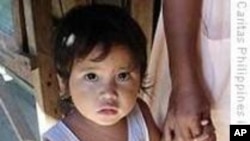<!-- IMAGE -->
In much of the developing world, millions of children continue to suffer from violence, sexual abuse, disease, extreme poverty, hunger, neglect and dangerous and exhausting labor. That is the finding of the United States Government's third annual report to Congress on U.S. assistance for orphans and other vulnerable children in developing countries.
The report, released December 23rd, documents the efforts of seven U.S. government departments and agencies, which provided some $5 billion in assistance to millions of vulnerable children and their families in 113 developing countries in fiscal year 2008.
Despite the efforts of the U.S. and its international partners, the problem is serious. The global economic crisis is making more children vulnerable and constraining the availability of resources needed to help them. The report offers a sobering statistical summary of the effects of poverty, bad governance, armed conflict, disaster and disease on children.
428 million children live in extreme poverty. 150 million girls have experienced sexual abuse. 163 million children have lost one or both parents. 2 million are in institutional care. 218 million are engaged in various forms of exploitative forms of labor and some 1 million eight-hundred thousand are subjected to prostitution and pornography.
The majority of displaced children are refugees, or are internally displaced, living on the streets or in institutions, associated with armed groups, vulnerable to exploitation and abuse such as human trafficking and child labor, or suffering from the effects of HIV/AIDS. They tend to have one thing in common: extreme poverty. The report states that poverty is a more consistent predictor of children's vulnerability than orphanhood.
The report outlines priorities for U.S. government assistance to highly vulnerable children in 2010 and beyond. These include increased support for the economic strengthening of extremely poor households to keep families intact and improve their ability to care for their children and increased support for child welfare and child-friendly social protection system strengthening, particularly workforce development.
As Gary Newton, United States Government Special Advisor for Orphans and Vulnerable Children noted, "with continued collaboration across agencies and partners, we can tackle more effectively the common constraints to improving children's well-being – extreme poverty, weak national child welfare programs, and threadbare – or non-existent – safety nets."














